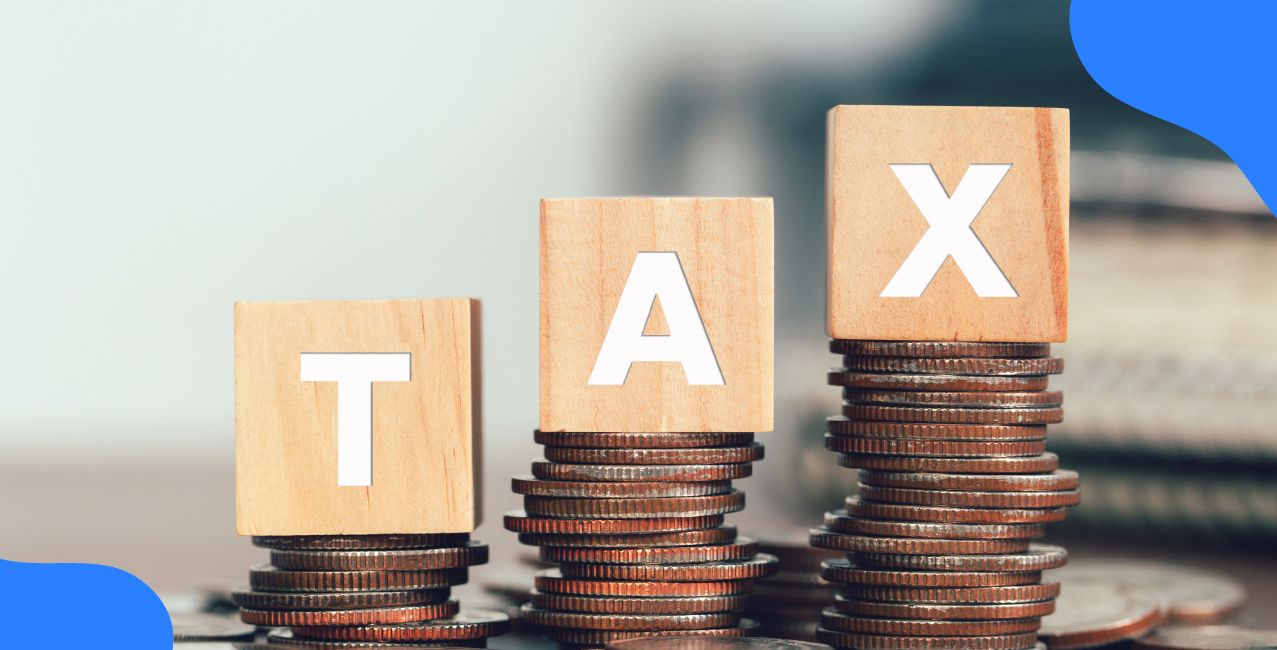
Author
LoansJagat Team
Read Time
10 Min
14 May 2025
How To Invest in Mutual Funds – Complete Beginner’s Guide
Let’s say Premlata, a 28-year-old marketing executive from Pune. This Diwali, she got a bonus of ₹1,00,000. She split it like this:
- ₹70,000 in equity mutual funds
- ₹20,000 in debt funds
- ₹10,000 she saved in a regular savings account
After 3 years:
- Her equity funds grew at 12% CAGR = ₹70,000 -> ₹98,400
- Debt funds grew at 6% CAGR = ₹20,000 -> ₹23,838
- Savings account at 3.5% = ₹10,000 -> ₹11,094
Total after 3 years = ₹1,33,332, that's ₹33,332 more, without lifting a finger! Isn’t that interesting?
Now imagine if she had just let that money sit in her bank, boring and barely growing!
Why did her plan work?
- She didn’t try to time the market
- She mixed equity and debt smartly
- She stayed invested, even during market dips
Small steps, big impact, cool, right?
What Are Mutual Funds?
Imagine 5 friends, Amit, Rina, John, Sara, and Ali; each has ₹1,000. Alone, they can't buy many stocks. So, they give their ₹5,000 to a fund manager. The manager uses this money to buy different shares—some from tech, some from banks, and some from energy companies. If the total value grows to ₹6,000, each friend’s ₹1,000 becomes ₹1,200.
Also Read – Mutual Funds vs Fixed Deposits
How Mutual Funds Work:
- People pool their money
- A fund manager invests it in many things
- Profits or losses are shared
- Risk is lower because money is spread out
Person | Invested ₹ | After Growth ₹ |
Amit | 1,000 | 1,200 |
Rina | 1,000 | 1,200 |
John | 1,000 | 1,200 |
Sara | 1,000 | 1,200 |
Ali | 1,000 | 1,200 |
Why Invest in Mutual Funds?
The information below is sourced from an article in the Business Standard.
Let’s say Neha, Raj, and Aman are three friends living in Mumbai. Each wants to invest ₹10,000 but isn’t sure where to start. Neha buys shares of a tech company. Raj puts his money in a bank fixed deposit. Aman, however, invests in a mutual fund that spreads his money across 20 different companies from various sectors.
After a year:
- Neha’s tech company does badly, and she ends up with ₹8,000.
- Raj earns a safe return, ending with ₹10,500.
- Aman’s mutual fund earns from multiple sectors—even though one sector underperforms, others do well—he ends up with ₹11,200.
Aman didn’t choose the companies himself; a professional fund manager did it. He could also withdraw the money whenever needed. Plus, since he chose an ELSS fund, he saved on tax.
Why Mutual Funds Make Sense?
- Diversification: Your money is spread across different companies and sectors, reducing risk.
- Expert Management: Fund managers invest on your behalf using their experience.
- Flexibility: You can invest small amounts regularly (like ₹500/month).
- Liquidity: You can easily withdraw when needed.
- Tax Benefits: Some funds (like ELSS) help save tax under Section 80C.
- Transparency: All details about where your money is going are available.
Why Invest in Mutual Funds?
Feature | Benefit for You |
Diversification | Reduces risk from poor-performing stocks |
Professional Help | Experts manage your money |
Easy to Start | Begin with small amounts |
High Liquidity | Withdraw anytime from most funds |
Tax Savings | Save up to ₹1.5 lakh (with ELSS) |
Transparency & Safety | Regulated by SEBI |
How to Start Investing in Mutual Funds?
The information below is sourced from an article in the Economic Times.
Let’s say Ravi, a 30-year-old software engineer, wants to invest ₹10 lakhs in FY26. He plans to buy a house in 10 years and also wants to keep money for emergencies and travel. Ravi talks to an expert who gives him this advice:
- Since his house goal is long-term, he invests ₹8 lakhs (80%) in equity mutual funds, which give higher returns over time.
- He puts ₹2 lakhs (20%) in debt funds, which are safer and give steady returns.
- For short-term goals like travel or emergencies, he keeps money in 100% debt funds.
Over time, Ravi checks his investments once a year and adjusts if needed.
Read More - The Best Investment Strategy for Millennials
Key Tips for FY26 Investing:
- Go Long-Term: Experts say FY26 may start with ups and downs due to global events and economic changes. Stay invested for the long run.
- Right Mix Matters: Use the 80:20 rule (equity:debt) for long-term, 70:30 for medium-term, and 100% debt for short-term.
- Start with SIP or Lump Sum: If markets are low and you have money, lump sum works. Else, start SIPs and increase gradually.
- Avoid Sector-Specific Funds: These can be risky. Prefer diversified funds like large-cap, mid-cap, or flexi-cap funds.
- Rebalance Annually: Check if your investments match your goals and adjust if needed.
How to Start Investing in Mutual Funds?
Step | What to Do |
1. Set Goals | Short, medium, or long-term? |
2. Know Risk Level | High, moderate, or low? |
3. Choose Funds | Equity for growth, debt for safety |
4. Start SIP/Lump Sum | Monthly SIP or one-time investment |
5. Review Yearly | Adjust allocation based on performance |
Things to Consider Before Investing in Mutual Funds:
The information below is sourced from an article in the Economic Times.
Let’s say, Ramesh wants to invest ₹1 lakh in a mutual fund. He finds two funds—Fund A and Fund B. Both gave 12% returns last year. But his advisor tells him not to look at returns alone. He shows Ramesh a few key ratios:
- Fund A has a Sharpe Ratio of 1.5 and a Beta of 0.8.
- Fund B has a Sharpe Ratio of 0.8 and a Beta of 1.3.
This means Fund A gave better returns with lower risk, while Fund B was more volatile. So, Ramesh chooses Fund A, because it’s safer and smarter for the same return.
Key Ratios:
- Alpha: The Extra return a fund gives over its benchmark (higher is better).
- Beta: Shows fund volatility. Less than 1 = less risky.
- Sharpe Ratio: How well a fund earns returns for the risk taken (higher is better).
- Treynor Ratio: Like Sharpe, but uses Beta to measure risk.
- Information Ratio: Tells how consistent the fund manager is.
- Sortino Ratio: Focuses only on downside risk (higher is better).
- Standard Deviation: Measures overall fund volatility.
- Semi Std Deviation: Focuses only on bad (downward) volatility.
- R-Squared: Shows how closely a fund follows its benchmark.
- Return Due to Selectivity: Checks how good the manager is at picking stocks.
Things to Check Before Investing in a Mutual Fund
Factor | Why It Matters |
Past Performance | To see how the fund did over time |
Sharpe/Sortino Ratio | To know risk-adjusted returns |
Beta & Std Deviation | To understand how volatile the fund is |
Alpha & Info Ratio | To judge a fund manager’s skill |
Fund Manager’s Track | Consistency matters more than just return |
Common Mistakes to Avoid In Mutual Funds:
The information below is sourced from an article in the Economic Times.
Let’s say Amit receives a ₹50,000 Diwali bonus. Excited, he sees an ad showing a mutual fund that gave 35% returns last year. Without any research or plan, he invests the entire amount. A few months later, the market dips, and Amit panics. He withdraws his money at a 10% loss, ending up with only ₹45,000.
His friend Neha, however, puts her ₹50,000 bonus into a balanced mutual fund, after checking the fund’s long-term returns and risk. She invests through SIP and stays calm during market ups and downs. After 3 years, her investment grows to ₹68,000.
What Did Amit Do Wrong?
Here are 5 common mistakes he made:
- Waiting for the "right time" – Markets can't be predicted. Start now!
- Chasing high returns without a plan – Always align your investment with your goals.
- Panicking during market dips – Stay invested; market dips are temporary.
- Putting all money in one asset (like gold) – Always diversify your investments.
- Judging by past performance only – Look at long-term consistency and fund strategy.
Common Mutual Fund Mistakes to Avoid
Mistake | Why to Avoid |
Timing the market | No one can predict ups and downs |
Chasing high past returns | Past returns don’t guarantee future success |
Panic selling during volatility | Short dips are normal; think long term |
No diversification | Increases risk by focusing on one asset |
No investment goal | Leads to poor product selection |
Conclusion:
Mutual funds are an easy and smart way to grow your money. You don’t need to be a finance expert. Just start small, invest regularly, and mix different types of funds like equity and debt. Don’t panic if markets go down for a while; stay invested. Don’t pick a fund only because it gave high returns before. Check how safe it is and who is managing it. Be patient, follow your plan, and your money will grow over time.
FAQs:
Can I start investing in mutual funds with a small amount?
Yes, you can begin with as little as ₹500 through SIP.
Is it risky to invest in mutual funds during market dips?
No, staying invested during market dips often leads to better long-term returns.
Should I choose a mutual fund just based on past returns?
No, always check the fund’s risk, consistency, and the manager’s track record too.
How to Guides – Investing, Trading & Wealth Building | ||
About the Author

LoansJagat Team
‘Simplify Finance for Everyone.’ This is the common goal of our team, as we try to explain any topic with relatable examples. From personal to business finance, managing EMIs to becoming debt-free, we do extensive research on each and every parameter, so you don’t have to. Scroll up and have a look at what 15+ years of experience in the BFSI sector looks like.

Quick Apply Loan
Subscribe Now


